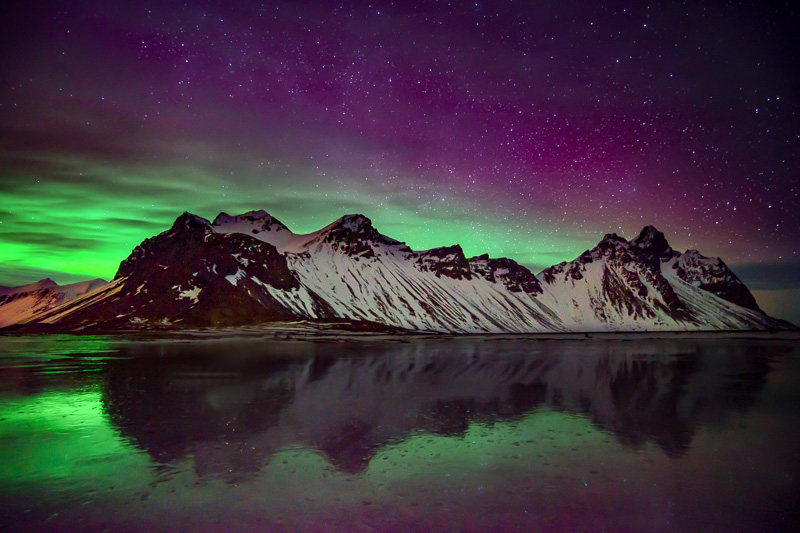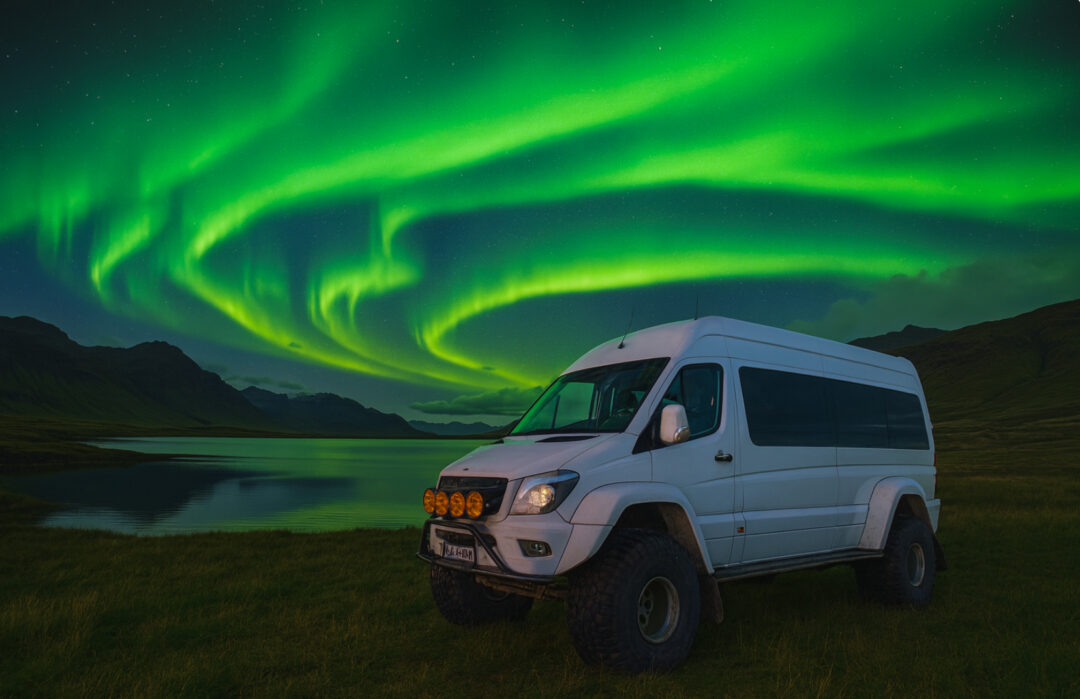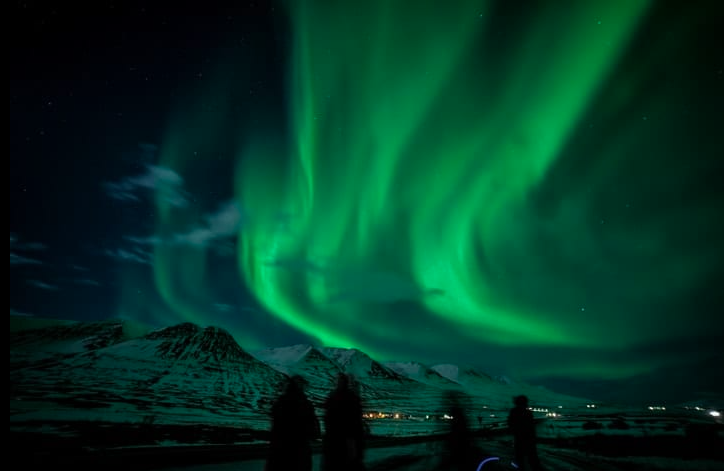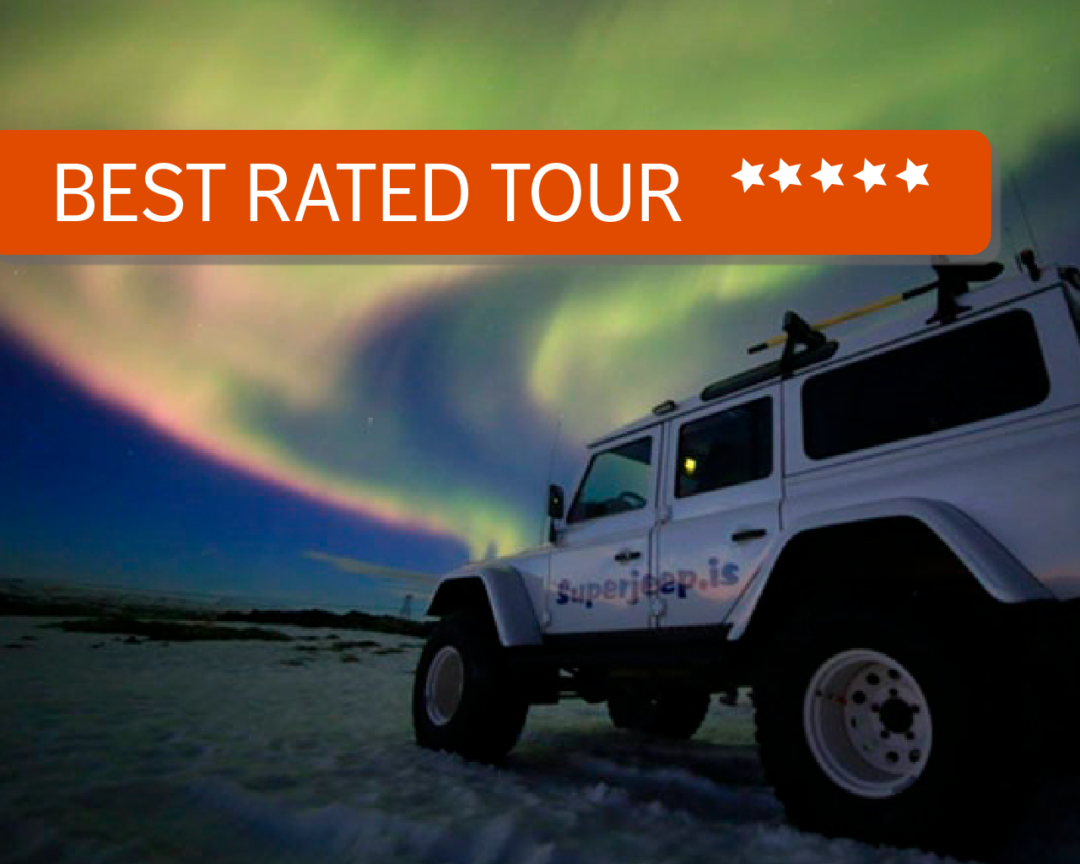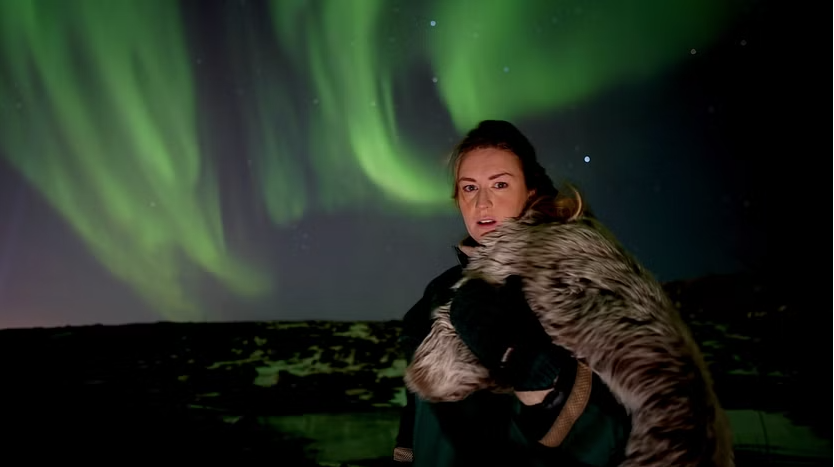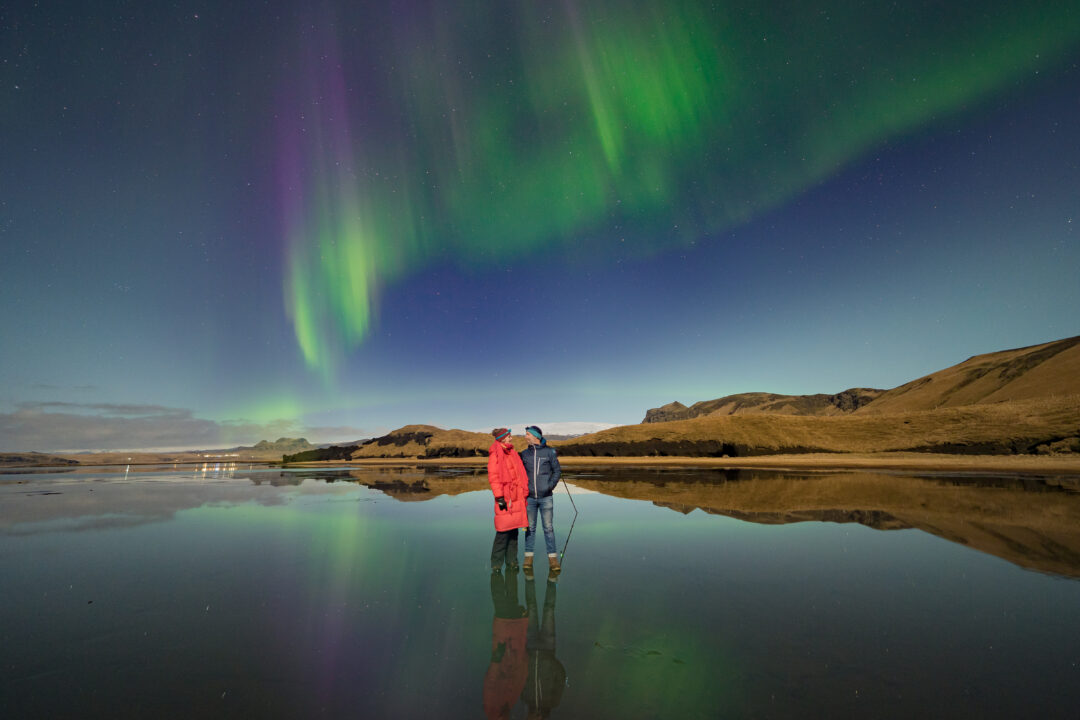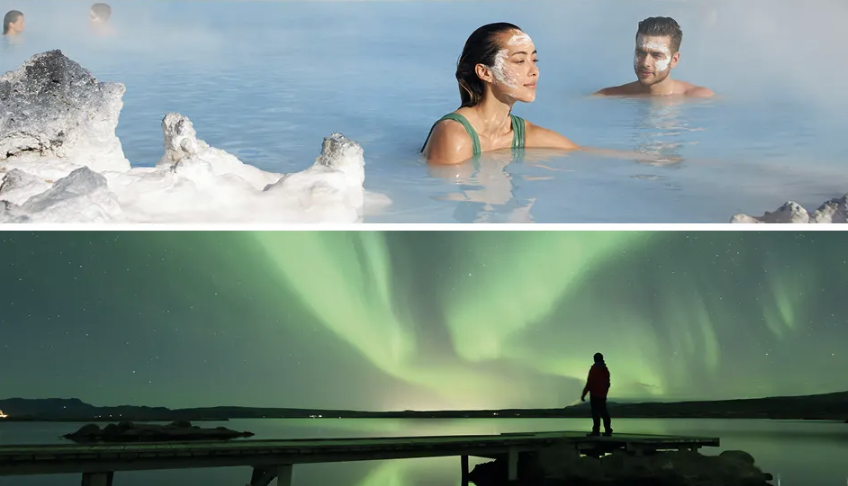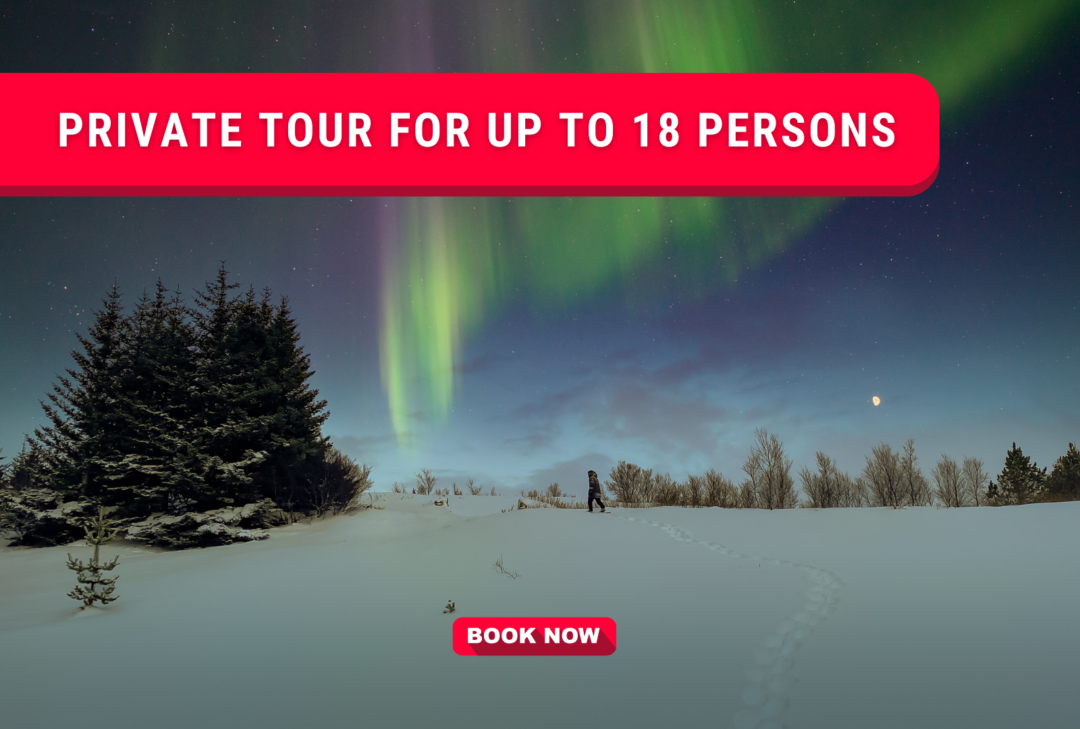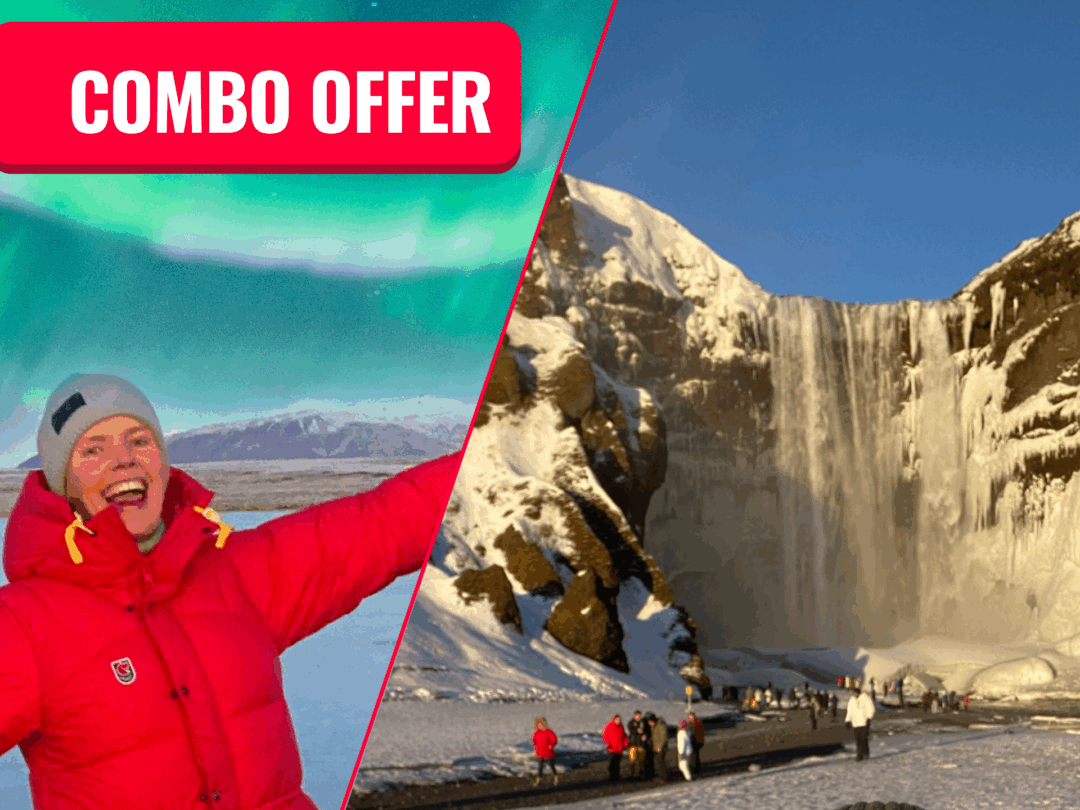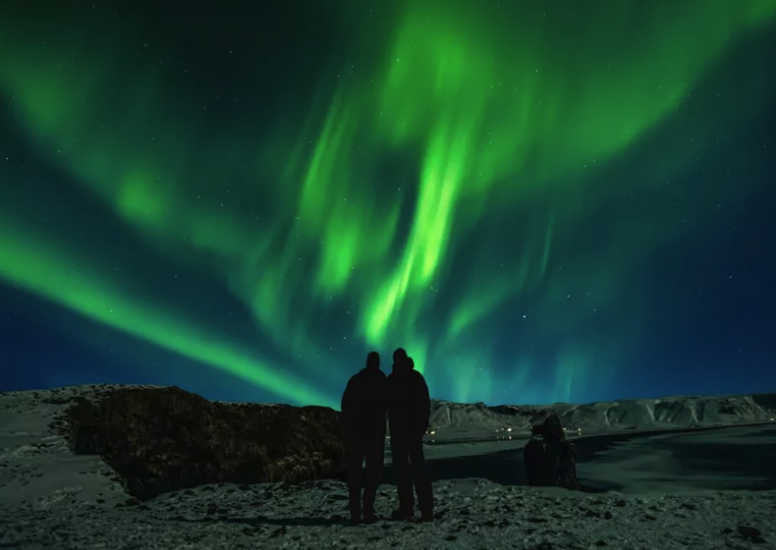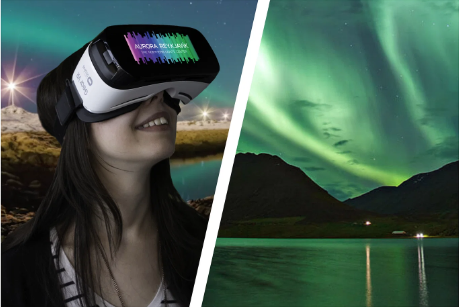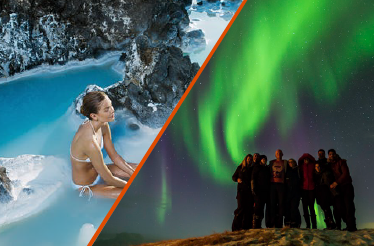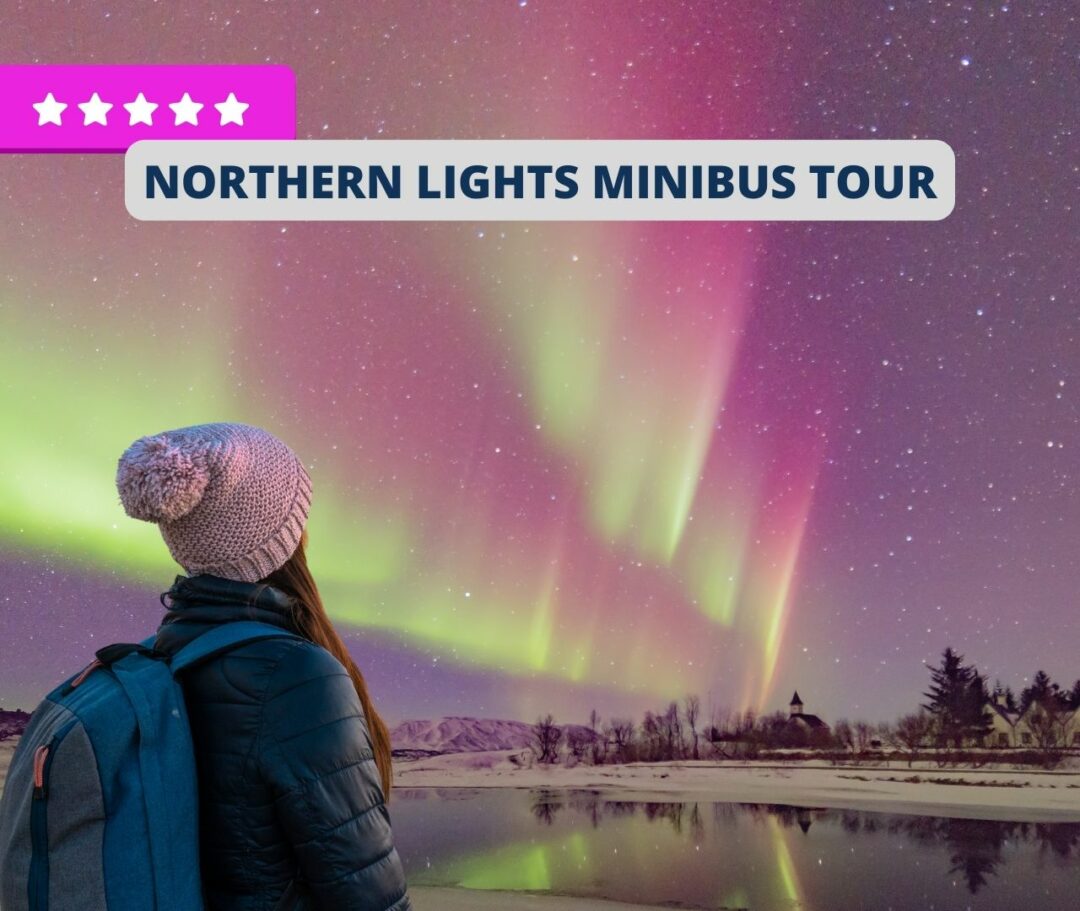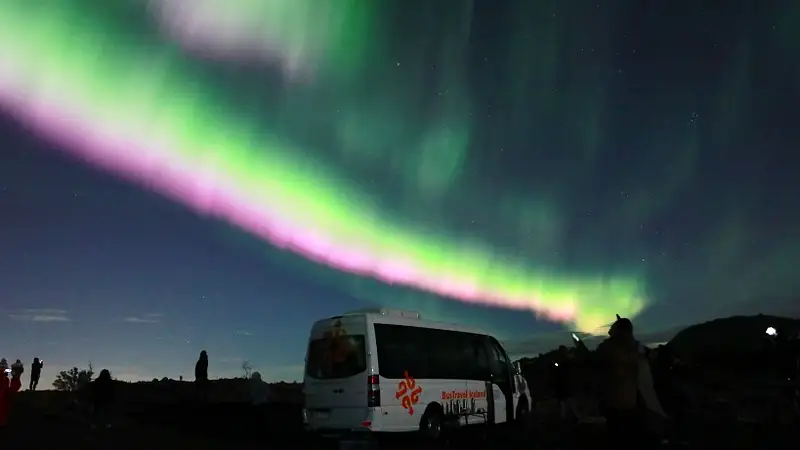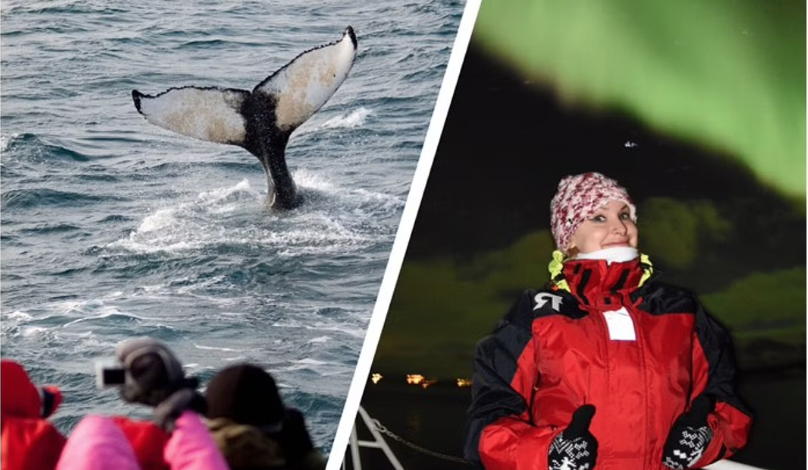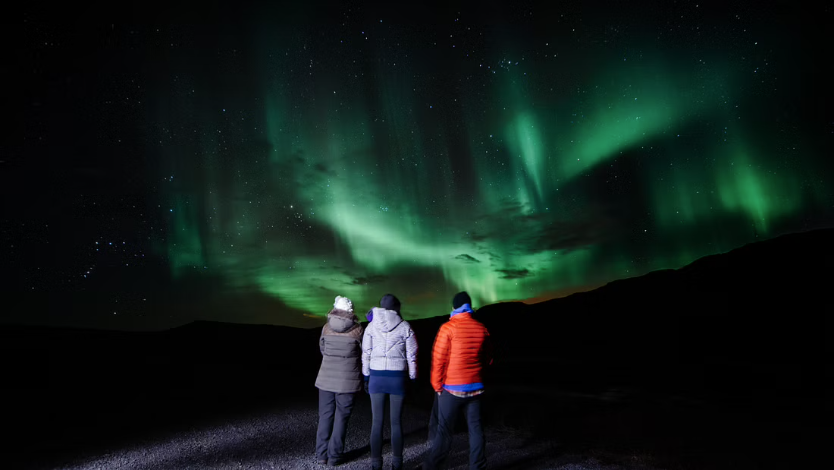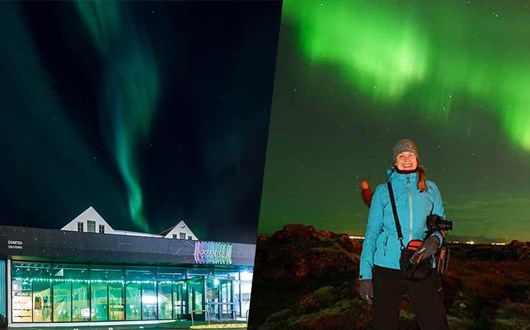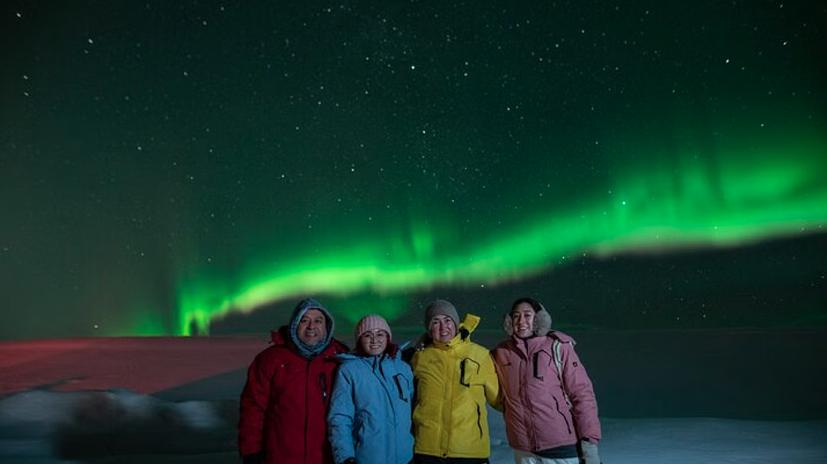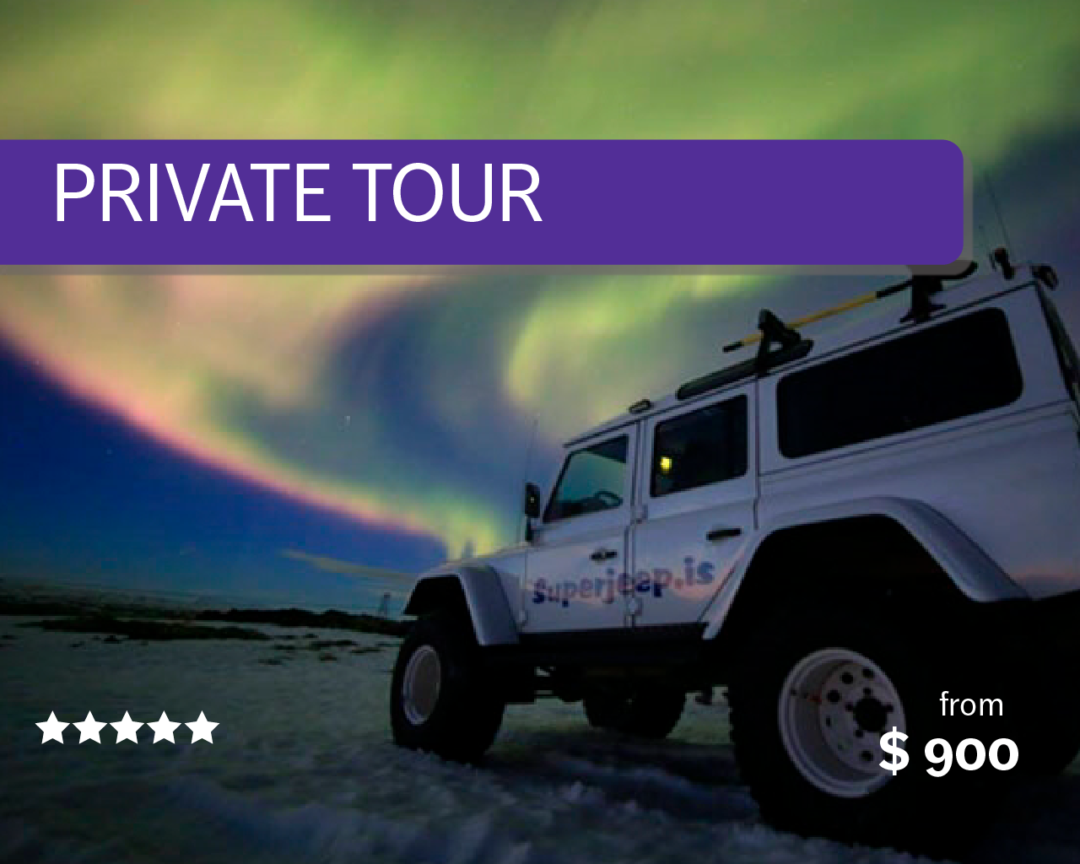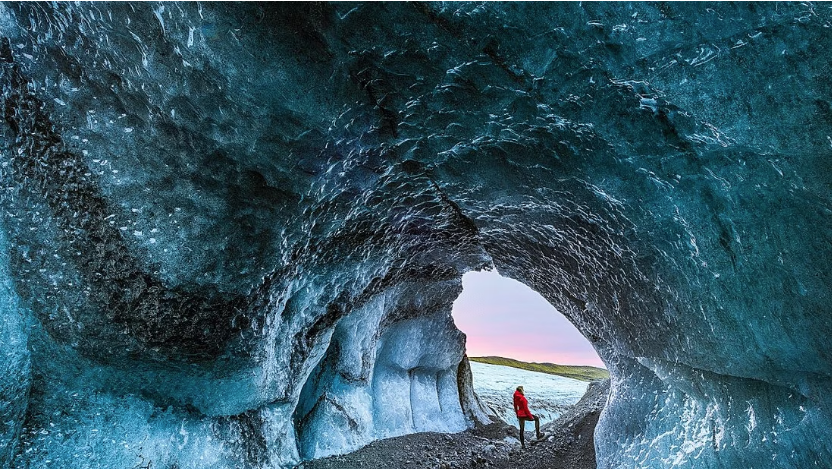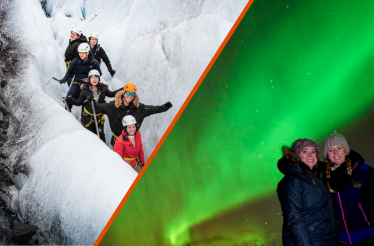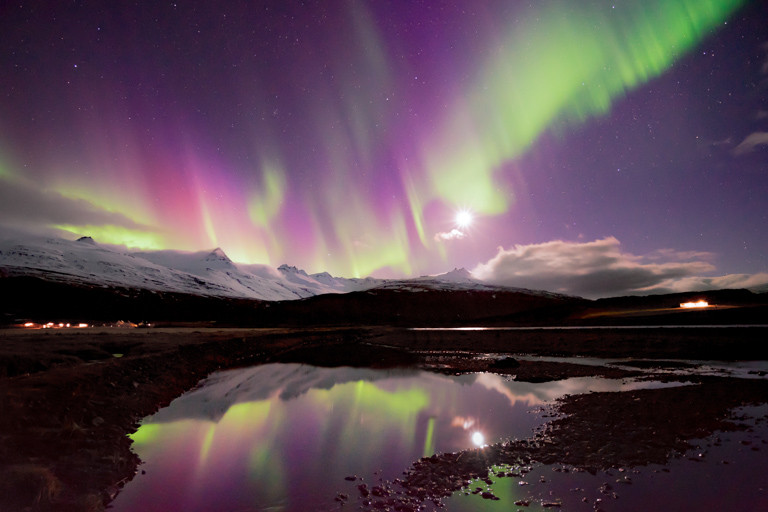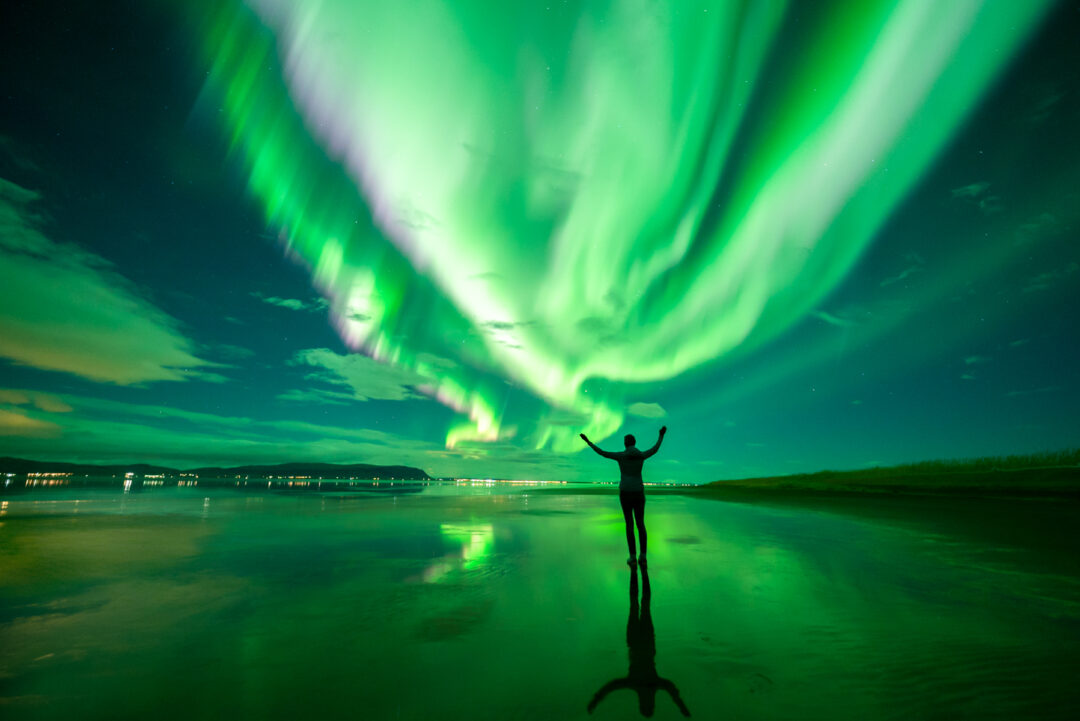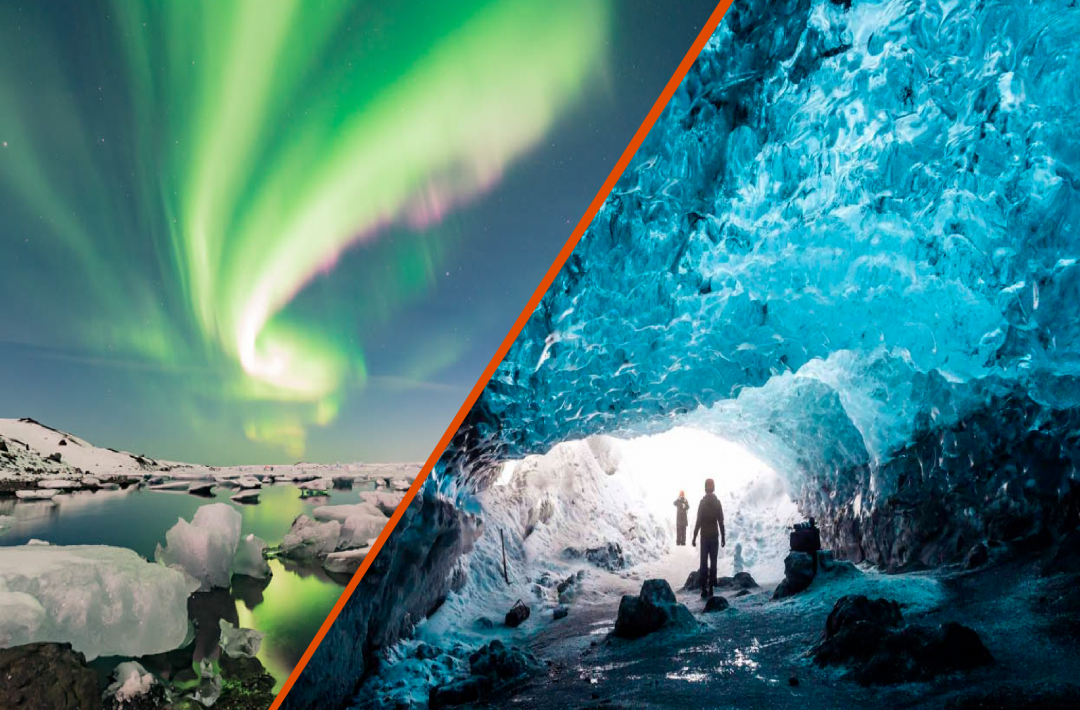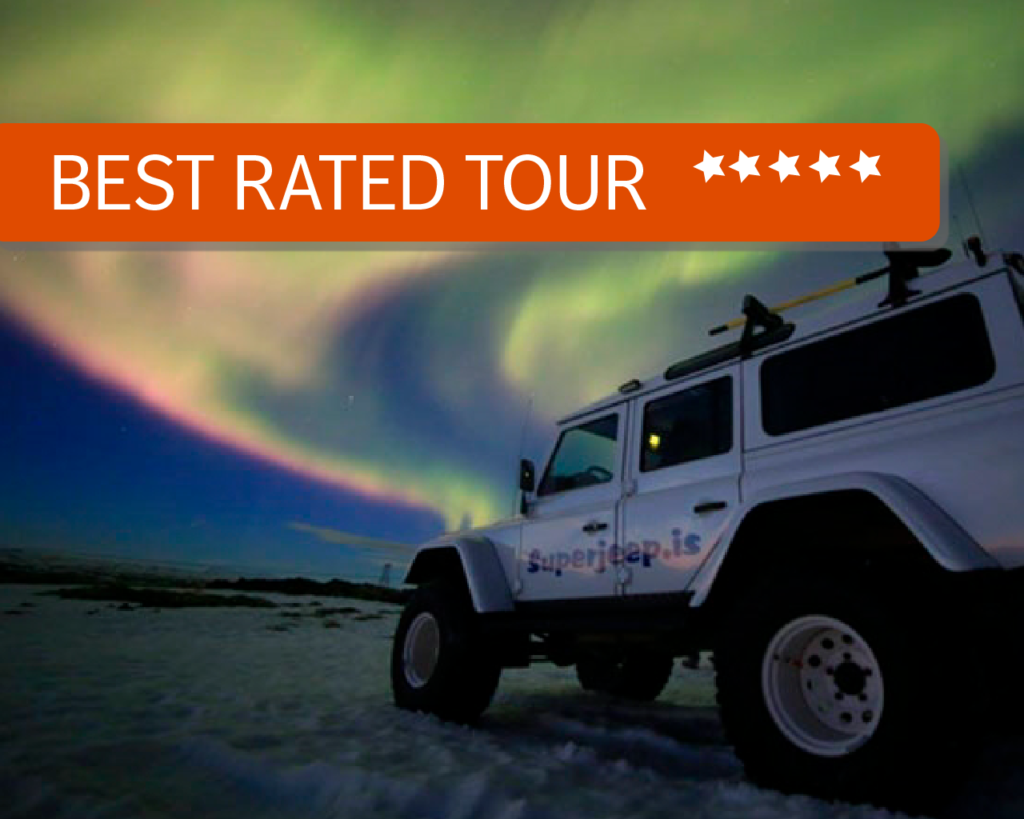¿Cuáles son los principales tipos de auroras boreales?
Por Chris Ayliffe, Arctic Meta
ÚNETE A NOSOTROS EN UNA EXCURSION PARA VER AURORAS BOREALES
Introducción
Las auroras boreales son uno de los espectáculos de luces más cautivadores de la naturaleza, iluminando los cielos nocturnos con deslumbrantes exhibiciones de color y movimiento.
Estas luces han fascinado a los seres humanos durante siglos, inspirando innumerables mitos, exploraciones científicas e incluso esfuerzos artísticos.
Presenciarlas en persona es una experiencia inolvidable, a menudo descrita como humillante, impresionante, cautivadora y, a menudo, simplemente con todos los superlativos combinados.
A pesar de su belleza cautivadora, no todas las auroras son iguales. Vienen en diversas formas, cada una con sus propias características y encanto único.
Esta guía profundiza en los principales tipos de Auroras Boreales, explica la ciencia detrás de sus diferencias y ofrece consejos para maximizar tus posibilidades de verlas en su forma más espectacular.
EXCURSIÓN DE AURORAS BOREALES EN SUPERJEEP
Principales tipos de auroras boreales que puedes esperar ver
Las auroras boreales aparecen en una variedad de formas y figuras, que pueden cambiar dependiendo de la actividad solar, las condiciones atmosféricas y la ubicación del observador.
A continuación se presentan los principales tipos de auroras, cada uno ofreciendo una experiencia visual única. Y, a menudo, cuanto más ves las auroras boreales, más comienzas a predecir las transiciones, pero hablaremos de eso un poco más adelante:
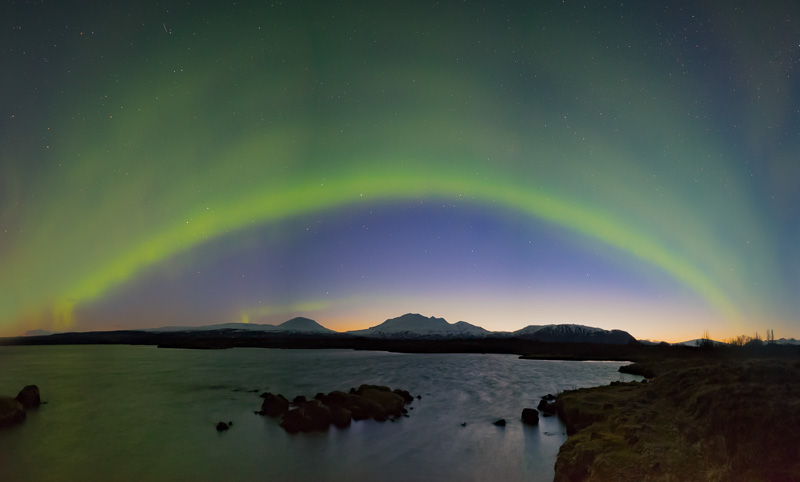
Aurora en forma de arco sobre Þingvallavatn, en el Círculo Dorado
1. Arcos
Los arcos son la forma más común de las auroras boreales, especialmente durante períodos de baja actividad solar.
Estas elegantes y alargadas bandas se extienden a través del cielo, a menudo de horizonte a horizonte, creando una curva serena y continua.
Su aparición suele ser estable, con poco movimiento. Sin embargo, durante un aumento de la actividad solar, los arcos pueden volverse más dinámicos, distorsionándose y bailando por el cielo.
En el museo Aurora Reykjavík tenemos un arco de aurora en exhibición con la luminosidad común que verás afuera a simple vista – es el lugar perfecto para practicar tanto tus habilidades fotográficas de auroras boreales, como tu agudeza para detectar las luces en tus cacerías de auroras.
Cuándo verlas: Los arcos son a menudo visibles en condiciones moderadas, lo que los hace ideales para los observadores de auroras primerizos.
Características destacadas: Exhiben una calidad tranquila y parecida a una cinta, a menudo brillando en verde debido a la interacción de las partículas solares con las moléculas de oxígeno en la atmósfera.
2. Bandas
Las bandas son similares a los arcos, pero muestran curvas y ondulaciones más pronunciadas.
A diferencia de la apariencia más suave de los arcos, las bandas exhiben una mayor variabilidad y comportamiento dinámico.
Estas formas pueden cambiar y transformarse rápidamente, añadiendo un elemento de imprevisibilidad al espectáculo auroral.
Cuándo verlas: Las bandas suelen aparecer durante una mayor actividad solar.
Notable Features: They can display a variety of colours, including pink, red, and purple, depending on the altitude and type of atmospheric gas involved.
Un consejo de amigo: Cuando empieces a ver rosa justo debajo de los colores verdes de la Aurora Boreal, ¡el espectáculo suele estar realmente en su punto máximo!
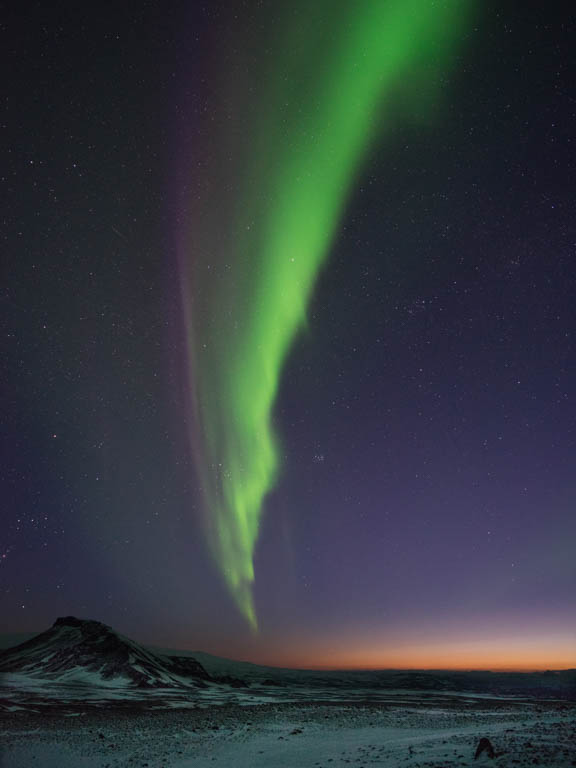
Banda morada y verde bailando sobre el glaciar Langjökull
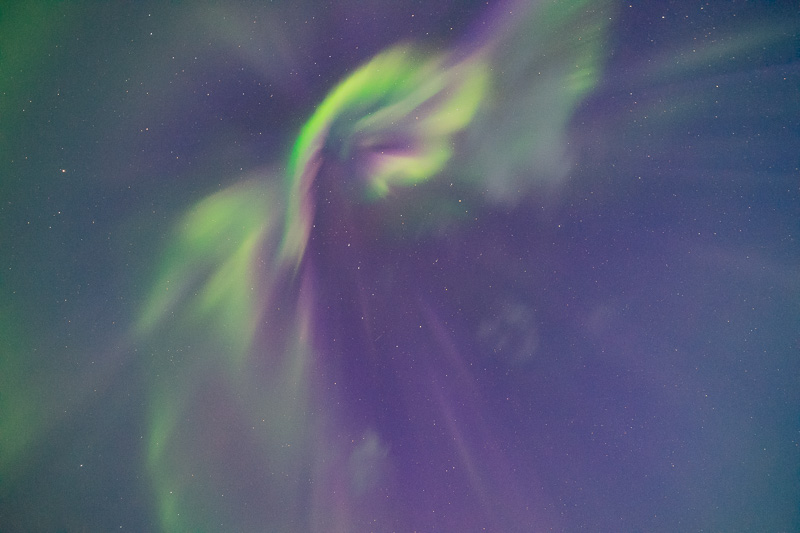
Espectacular aurora en forma de corona ilumina el cielo nocturno islandés
3. Corona
La corona es uno de los tipos de auroras boreales más impresionantes.
Este tipo de aurora se forma directamente sobre nuestra cabeza, convergiendo en un punto que recuerda a una corona de luz – pista: ¡está en el nombre!
Las coronas suelen ser el resultado de una intensa actividad solar y a menudo muestran una paleta vibrante de colores, incluyendo verdes, morados, azules y blancos.
Sabrás que estás viendo una aurora corona cuando ese dolor en el cuello comienza a aparecer justo lo suficiente mientras inclinas completamente la cabeza hacia el cielo.
Estos espectáculos pueden cubrir todo el cielo y regularmente vemos cómo se les cae la mandíbula a los viajeros y empiezan los “¡wow!” – siempre una experiencia maravillosa.
Cuándo verlas: Las coronas ocurren durante el pico de la actividad auroral y son más comunes cerca de los polos magnéticos – nosotros las experimentamos en Islandia con mucha regularidad.
Características destacadas: Su rápido movimiento y convergencia en un punto central crean un efecto visual dramático, lo que hace que las coronas sean una de las favoritas para fotógrafos y entusiastas. Pero asegúrate de tener tu cámara lista, para que puedas disfrutar del estallido de colores en el lienzo con tus propios ojos, estando totalmente en el momento.
4. Difusas
Las auroras difusas son un tipo más raro y sutil de auroras boreales.
A diferencia de los arcos, bandas o coronas, las auroras difusas no tienen una forma o estructura definida. En su lugar, aparecen como parches de luz tenues y parecidos a nubes que se extienden por el cielo.
Las auroras difusas suelen ocurrir temprano en la noche, o simplemente cuando la densidad solar es más baja.
Ten paciencia si ves una aurora difusa – esto puede ser una buena indicación de que el espectáculo está a punto de comenzar – todos nuestros mejores guías estarían de acuerdo.
Cuándo verlas: Las auroras difusas son más propensas a verse durante períodos de baja actividad solar o en latitudes más bajas.
Características destacadas: Su apariencia suave hace que sea más difícil de detectar a simple vista, pero la fotografía de larga exposición puede capturar su belleza etérea.
EXCURSIÓN DE AURORAS BOREALES EN GRUPO REDUCIDO
5. Rayos
Los rayos son delgadas franjas verticales de luz que a menudo se forman cuando los arcos o bandas finas se enrollan en filamentos estrechos.
Pueden aparecer como columnas cortas y parpadeantes o extenderse dramáticamente hacia arriba en el cielo.
Más a menudo de lo que se cree, aparecen en un tono pálido de púrpura y pueden permanecer como elementos imponentes en el cielo nocturno durante bastante tiempo, lo que los convierte en una prueba divertida para tus habilidades en fotografía de larga exposición.
Cuándo verlos: Los rayos son comunes durante períodos de alta actividad solar y a menudo son parte de espectáculos aurorales más grandes.
Características destacadas: Sus detalles intrincados y movimiento rápido añaden profundidad y complejidad a la experiencia auroral.
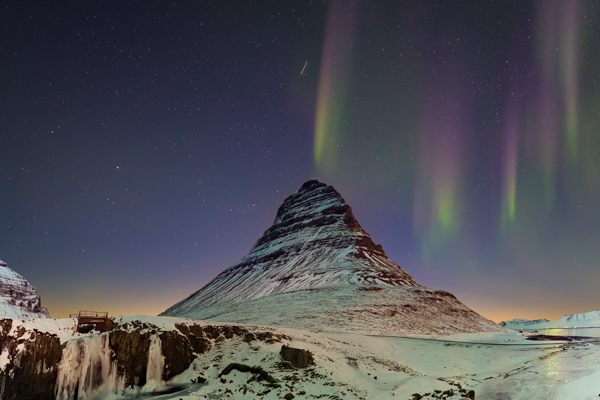
Rayos de aurora boreal sobre Kirkjufell
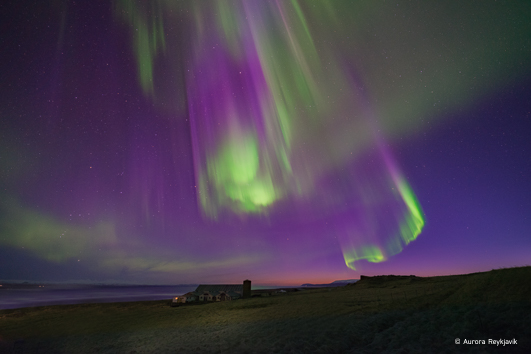
Aurora boreal parpadeando en púrpura y verde sobre una granja islandesa
6. Parpadeantes
Las auroras parpadeantes son otra variación dinámica, caracterizada por cambios rápidos en la intensidad y el brillo.
Estas auroras dan la impresión de luces pulsantes o parpadeantes y pueden ocurrir en conjunto con otros tipos de auroras, como las bandas o los rayos.
En nuestra experiencia, estos extraños parpadeos pueden bailar por todo el cielo tarde en la noche, después de las 3 a.m. No tengo una razón científica para esto, por el momento, pero es solo la experiencia de muchas noches bajo los cielos oscuros de Islandia – tendrás que descubrirlo por ti mismo.
Cuándo verlas: Las auroras parpadeantes son más visibles durante condiciones geomagnéticas turbulentas.
Características destacadas: Se cree que sus patrones rítmicos son el resultado de turbulencias localizadas en la magnetosfera.
¿Qué causa los diferentes tipos de auroras boreales?
Las diferencias en los tipos de auroras boreales son causadas principalmente por variaciones en la actividad solar, el campo magnético de la Tierra y las condiciones atmosféricas.
Aquí tienes un análisis más profundo de los factores en juego:
Actividad solar
El Sol libera partículas cargadas al espacio a través del viento solar.
Cuando estas partículas chocan con la magnetosfera de la Tierra, crean auroras. Las tormentas solares intensas pueden dar lugar a exhibiciones aurorales más vibrantes y diversas.
Campo magnético
El campo magnético de la Tierra canaliza las partículas solares hacia los polos. Las variaciones en la intensidad y la orientación del campo magnético influyen en la forma y el movimiento de las auroras.
Composición atmosférica
Los colores específicos de las auroras dependen del tipo de moléculas de gas que son energizadas por las partículas entrantes.
Por ejemplo, el oxígeno produce luces verdes y rojas, mientras que el nitrógeno contribuye a los tonos azules y morados.
Altitud
La altura a la que ocurre la actividad auroral también determina su apariencia.
Por ejemplo, las auroras verdes suelen ocurrir a altitudes de 90-150 km, mientras que las auroras rojas aparecen a altitudes superiores a 150 km.
Curiosamente, las tormentas geomagnéticas más poderosas (como las que se vieron el 10 de octubre de 2024) a menudo producen auroras rojas a mayor altitud.
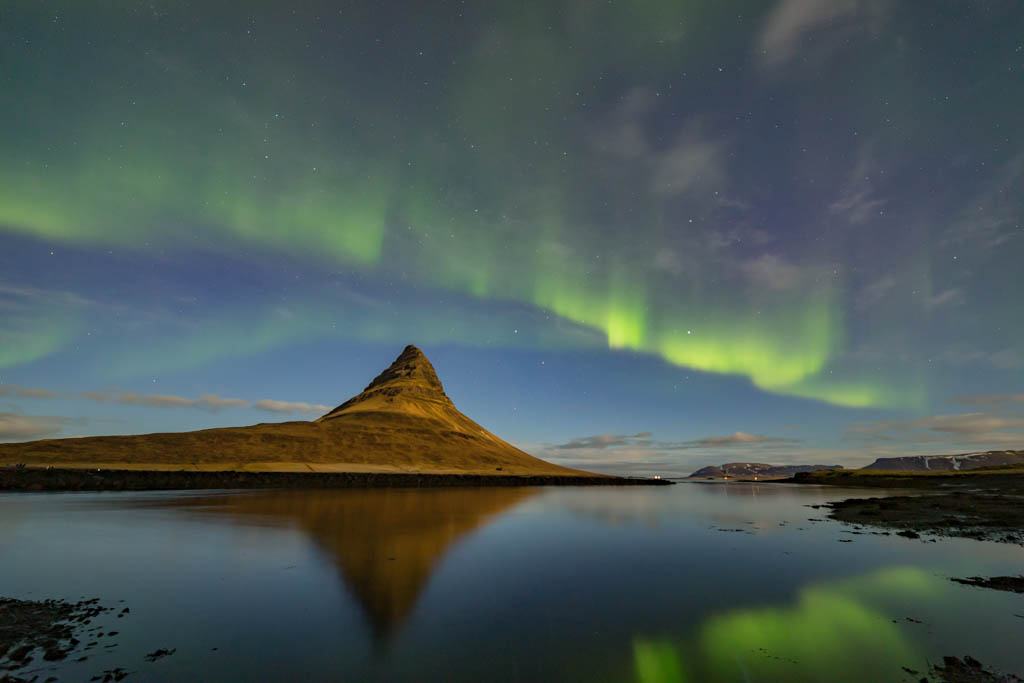
Bandas de auroras boreales sobre Kirkjufell – Península de Snæfellsnes
¿Cuáles son los tipos más comunes de auroras boreales?
Entre los diversos tipos, los arcos y las bandas son los más comúnmente observados.
Estas formas son más propensas a aparecer durante una actividad solar moderada, lo que las hace accesibles para una amplia gama de espectadores.
Su presencia constante y sus movimientos gráciles las convierten en elementos esenciales de la experiencia auroral.
Las coronas y los rayos, aunque menos comunes, ofrecen espectáculos espectaculares que requieren niveles más altos de actividad solar.
Las auroras difusas, siendo las más raras, a menudo se pasan por alto, pero poseen una belleza sutil para aquellos que logran verlas.
Lo que logres ver depende en gran medida de la suerte de la noche. Sin embargo, lo que podemos garantizar es que, después de disfrutar de tu primera aparición, ¡volverás a por más!
Bueno, lo decimos nosotros, ¡ya que somos adictos a las Auroras Boreales!
¿Cuáles son las fases de las etapas de las auroras boreales durante cada noche?
Cada noche de actividad auroral progresa típicamente a través de tres fases distintas: crecimiento, expansión y recuperación. Comprender estas etapas puede ayudarte a planificar tu experiencia de observación de manera más eficaz.
Crecimiento
Durante la fase de crecimiento, la aurora comienza como un débil arco o banda en el horizonte.
Esta fase se caracteriza por un aumento constante en el brillo y la intensidad a medida que las partículas solares siguen interactuando con la atmósfera.
La fase de crecimiento prepara el escenario para exhibiciones más dinámicas más tarde en la noche.
Duración típica: 30 minutos a unas pocas horas.
Expansión
La fase de expansión marca el pico de la actividad auroral.
Durante esta etapa, las luces se vuelven más vibrantes y dinámicas, con arcos que se transforman en bandas, coronas, rayos o patrones parpadeantes.
Las auroras pueden cubrir una mayor porción del cielo y mostrar una gama más amplia de colores.
Mejor momento para observar: La fase de expansión ofrece las exhibiciones más dramáticas y coloridas, lo que la convierte en el momento ideal para fotógrafos y entusiastas.
Recuperación
En la fase de recuperación, la aurora comienza a desvanecerse y perder intensidad.
Las luces pueden volver a su forma original de arco o banda antes de desaparecer por completo.
Esta fase señala el final de la exhibición auroral por el momento. Pero, a continuación, comienza de nuevo la fase de crecimiento – ¡hora del chocolate caliente!
Características clave: Disminución de la intensidad y un regreso gradual a la calma.
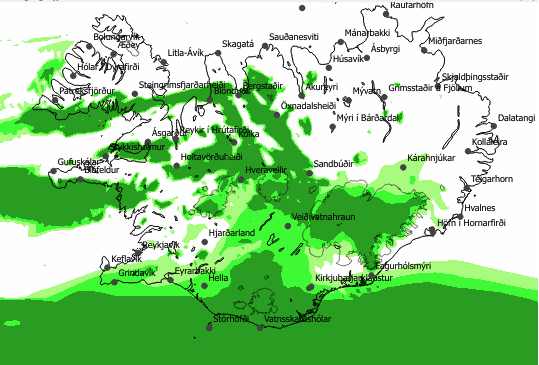
Pronóstico de auroras boreales para Islandia, detallando la cobertura de nubes bajas y medias.
¿Es posible predecir la actividad de las auroras boreales?
Sí, es posible predecir la actividad de las auroras boreales hasta cierto punto.
Los científicos utilizan datos de observatorios solares y satélites para monitorear la actividad solar y estimar la probabilidad de exhibiciones aurorales.
Índice KP: El índice KP es una escala de 0 a 9 que mide la actividad geomagnética. Un índice KP más alto indica una mayor probabilidad de ver las auroras boreales.
Óvalo auroral: El óvalo auroral es un mapa de las regiones donde es más probable que la aurora sea visible. Las actualizaciones en tiempo real pueden ayudar a identificar los lugares óptimos para la observación.
Aunque estas herramientas proporcionan una guía valiosa, la naturaleza impredecible de la actividad solar significa que los pronósticos no siempre son 100% precisos.
¿Qué tan precisos son los pronósticos de las auroras boreales?
Los pronósticos de auroras boreales son generalmente fiables para predicciones a corto plazo (24-48 horas).
Sin embargo, los pronósticos a largo plazo son menos precisos debido a la naturaleza compleja y dinámica de la actividad solar.
Factores como la cobertura de nubes, la contaminación lumínica y las condiciones meteorológicas locales también pueden afectar la visibilidad, por lo que es esencial consultar múltiples fuentes al planificar tu búsqueda de auroras.
Por eso siempre recomendamos reservar uno de nuestros tours recomendados para ver las auroras boreales – la experiencia de los guías en leer los datos y saber dónde ir te da más tiempo para relajarte, disfrutar y centrarte en la experiencia de la búsqueda y el mayor espectáculo de la naturaleza.
¿Cuáles son mis posibilidades de ver las auroras boreales en Islandia?
Islandia es uno de los mejores lugares del mundo para ver las auroras boreales, gracias a su ubicación bajo el óvalo auroral y sus cielos oscuros y despejados.
Las posibilidades de ver la aurora en Islandia son más altas durante los meses de invierno (de septiembre a abril) cuando las noches son largas y oscuras.
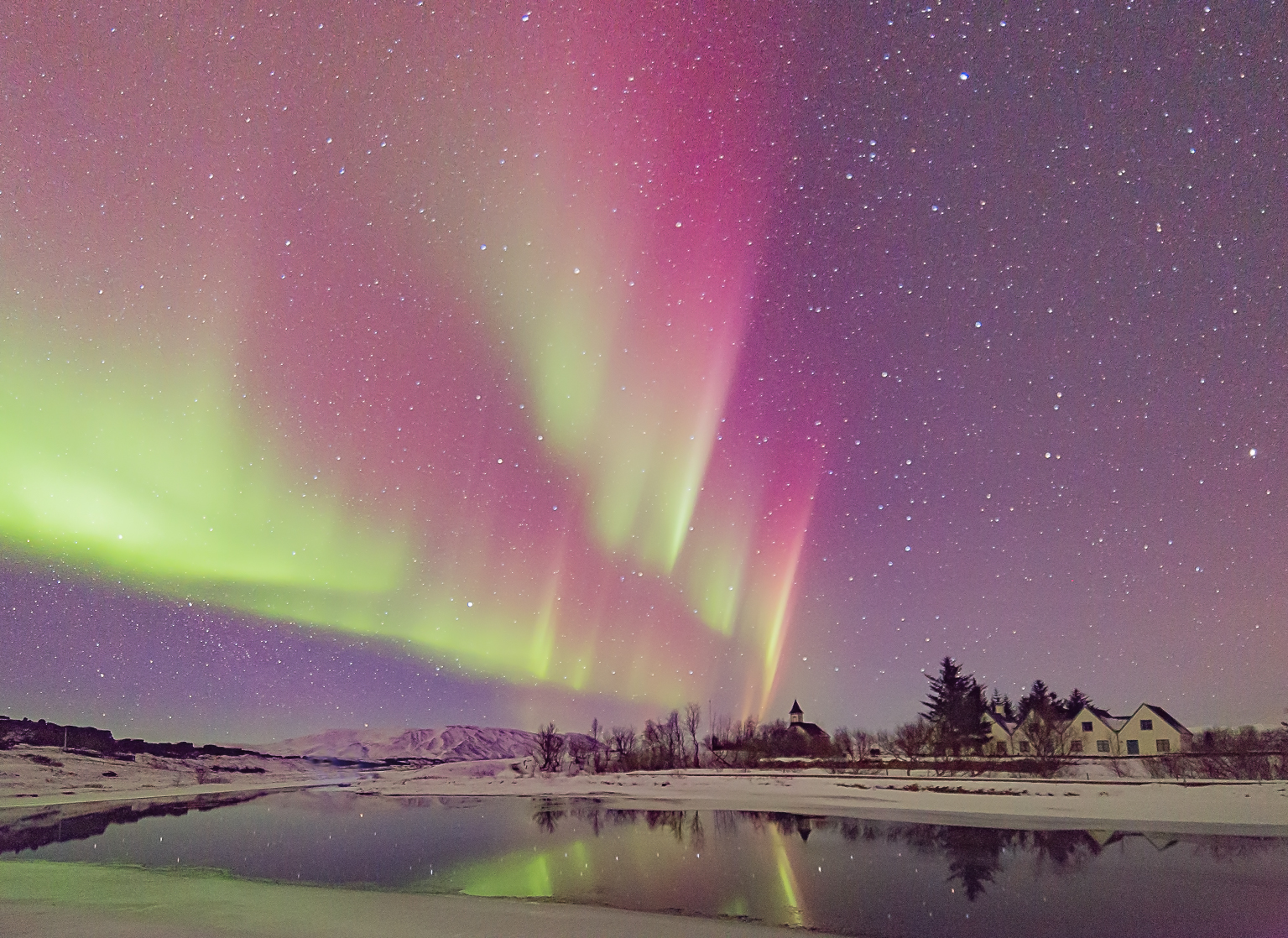
Auroras boreales de color rosa brillante y verde en Þingvellir, patrimonio de la humanidad de la UNESCO.
Consejos para ver las auroras boreales en Islandia
Elige una ubicación oscura: Evita las zonas urbanas con contaminación lumínica. Lugares remotos como el Parque Nacional Þingvellir y la Laguna Glaciar Jökulsárlón ofrecen excelentes condiciones para ver las auroras.
Consulta el pronóstico de auroras: Monitorea los pronósticos de auroras y las condiciones meteorológicas para aumentar tus posibilidades de éxito.
Ten paciencia: Las exhibiciones de auroras boreales pueden ser impredecibles. A veces, los espectáculos más impresionantes ocurren después de horas de espera.
Conclusión
Las auroras boreales son un fenómeno natural mágico, que ofrece una variedad de formas, colores y movimientos que cautivan e inspiran. Desde la serena belleza de los arcos y bandas hasta el espectáculo dramático de coronas y rayos, cada tipo de aurora tiene su propio atractivo único.
Al comprender los factores que influyen en la actividad auroral y las fases de su exhibición nocturna, puedes aumentar tus posibilidades de presenciar este increíble espectáculo.
Ya sea que estés persiguiendo las luces en Islandia o en otro lugar de auroras, la experiencia de estar bajo el cielo ártico y ver las auroras boreales en todo su esplendor es una que te acompañará para siempre.

